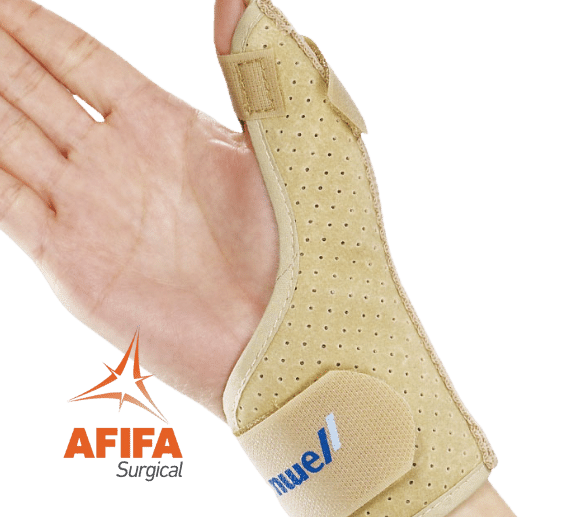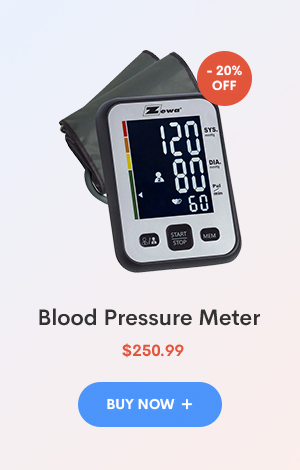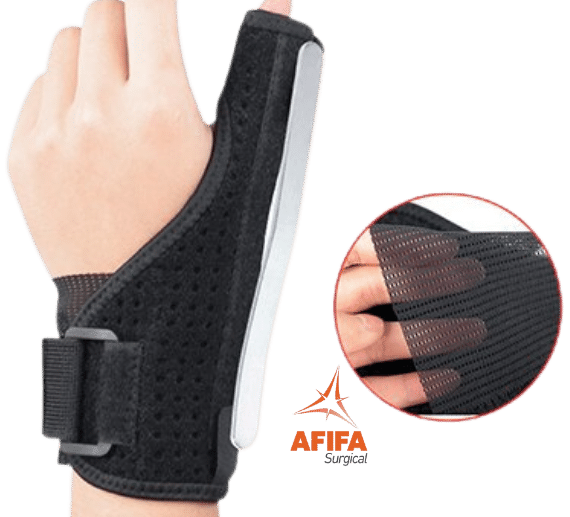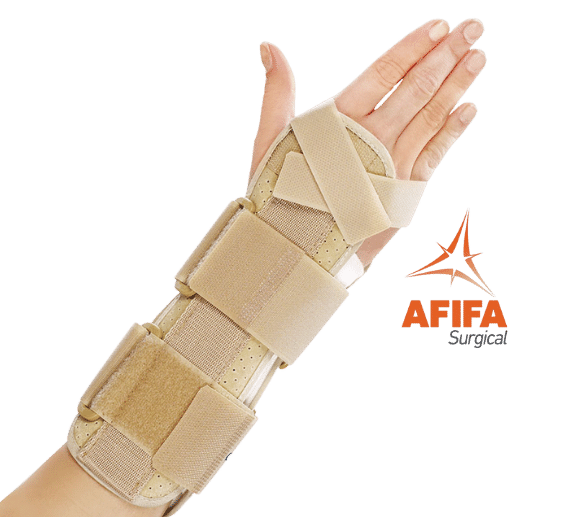Description
THUMB WRIST SPLINT 53160
If you have ever experienced a thumb or wrist injury, you know how painful and inconvenient it can be. These injuries can greatly impact your daily routine, making simple tasks like typing, writing, or even cooking difficult. Luckily, there is a solution – thumb wrist splints. In this article, we will cover everything you need to know about thumb wrist splints, from what they are and how they work, to their benefits and potential side effects.
What are Thumb Wrist Splints?
Thumb wrist splints are orthopedic devices that are designed to immobilize and support the wrist and thumb joints. They are made of a variety of materials such as neoprene, foam, or plastic, and come in different sizes and shapes. These splints are typically used to treat injuries or conditions that affect the thumb or wrist, such as sprains, strains, carpal tunnel syndrome, and arthritis.
How do Thumb Wrist Splints Work?
Thumb wrist splints work by limiting the movement of the thumb and wrist joints, allowing the injured area to rest and heal. They provide support and compression to the affected area, which can help reduce pain, swelling, and inflammation. Additionally, thumb wrist splints can help prevent further injury by stabilizing the joint and preventing unnecessary movement.
Types of Thumb Wrist Splints
There are several types of thumb wrist splints available, each designed to address specific conditions or injuries. Here are some of the most common types:
Thumb Spica Splints
Thumb spica splints are designed to immobilize the thumb and wrist, while still allowing for some movement of the fingers. They are typically used to treat thumb sprains, fractures, and tendonitis.
Wrist Brace Splints
Wrist brace splints are designed to provide support and compression to the wrist joint. They can be used to treat a variety of conditions, including carpal tunnel syndrome, wrist sprains, and tendonitis.
Thumb Stabilizer Splints
Thumb stabilizer splints are designed to provide support and stabilization to the thumb joint. They are typically used to treat thumb sprains, strains, and arthritis.
Benefits of Thumb Wrist Splints
There are many benefits to using thumb wrist splints, including:
- Pain relief: Thumb wrist splints can help reduce pain and discomfort caused by injuries or conditions affecting the wrist and thumb joints.
- Improved healing: By limiting movement and providing support to the affected area, thumb wrist splints can help speed up the healing process.
- Increased mobility: Thumb wrist splints can help improve joint mobility by reducing pain and inflammation.
- Prevention of further injury: By immobilizing and stabilizing the affected joint, thumb wrist splints can help prevent further injury.
Potential Side Effects
While thumb wrist splints are generally considered safe, they can cause some side effects, including:
- Skin irritation or rash: Some people may experience skin irritation or rash due to the material of the splint or prolonged use.
- Reduced mobility: While thumb wrist splints can improve joint mobility, they can also limit movement, which can be inconvenient for some users.
- Muscle weakness: Prolonged use of thumb wrist splints can lead to muscle weakness, especially if the splint is not removed periodically to allow for exercise and stretching.
How to Choose the Right Thumb Wrist Splint
Choosing the right thumb wrist splint can be a daunting task, especially with so many options available. Here are some things to consider when choosing a thumb wrist splint:
- Type of injury or condition: Choose a splint that is specifically designed to treat your injury or condition.
- Material: Consider the material of the splint and choose one that is
- Size: Make sure to choose the right size for your hand and wrist to ensure a proper fit and maximum effectiveness.
- Level of support: Depending on your injury or condition, you may need a splint that provides more or less support. Talk to your doctor or physical therapist to determine the appropriate level of support.
How to Use a Thumb Wrist Splint
Using a thumb wrist splint is fairly simple, but it’s important to follow the manufacturer’s instructions and your doctor’s advice. Here are some general guidelines:
- Wear the splint as directed, typically for a few hours at a time, or as recommended by your doctor or physical therapist.
- Remove the splint periodically to allow for exercise and stretching.
- Keep the splint clean and dry to prevent skin irritation or infection.
- Avoid activities that may further aggravate your injury or condition while wearing the splint.
Conclusion
Thumb wrist splints are an effective and non-invasive way to treat a variety of thumb and wrist injuries and conditions. By providing support and immobilization to the affected area, thumb wrist splints can help reduce pain, inflammation, and promote healing. However, it’s important to choose the right splint and use it as directed to avoid any potential side effects. If you’re dealing with a thumb or wrist injury, talk to your doctor or physical therapist to determine if a thumb wrist splint is right for you.
FAQs
1. Can I wear a thumb wrist splint while sleeping?
Yes, you can wear a thumb wrist splint while sleeping, especially if you tend to move around a lot while sleeping. However, make sure to follow your doctor’s or physical therapist’s instructions for how long to wear the splint and when to remove it for exercise and stretching.
2. How long do I need to wear a thumb wrist splint?
The length of time you need to wear a thumb wrist splint depends on your injury or condition and your doctor’s or physical therapist’s recommendations. Some people may need to wear a splint for several weeks or even months, while others may only need to wear it for a few days.
3. Can I wash my thumb wrist splint?
Yes, you can wash your thumb wrist splint, but make sure to follow the manufacturer’s instructions for how to clean it. Most splints can be hand-washed with mild soap and water and then air-dried.
4. Can I still use my hand while wearing a thumb wrist splint?
Yes, you can still use your hand while wearing a thumb wrist splint, but your movement may be limited depending on the type of splint and your injury or condition. Follow your doctor’s or physical therapist’s recommendations for how to use your hand while wearing the splint.
5. Can I buy a thumb wrist splint without a prescription?
Yes, you can buy a thumb wrist splint without a prescription, but it’s important to choose the right type and size for your injury or condition. Talk to your doctor or physical therapist for recommendations, or consult a certified orthotist or prosthetist for expert advice.






Ayesha Tariq –
Just received my order from AfifaSurgical and everything is in perfect condition. Will definitely be recommending them to my colleagues.